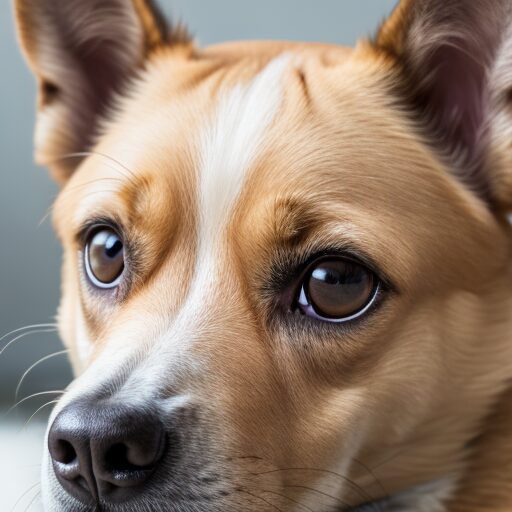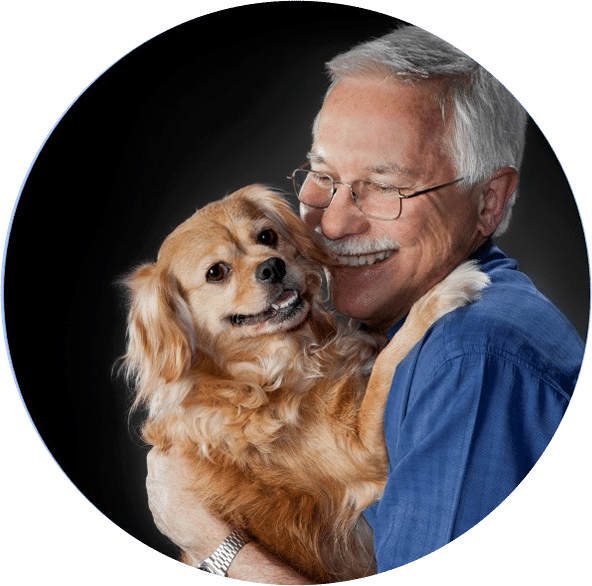Eye Disease in Pets – A Thing to Watch
In pets, conditions affecting the eyes are quite common and potentially serious.
They can range from simple eye irritations to serious and life threatening diseases.
What are the signs of eye disease?
The commonest sign of eye disease is the production of tears or a discharge from the affected eye or eyes but other signs can include the dog or cat squinting or blinking excessively. Also, if the eye appears either larger or smaller than normal, has a cloudy or blue appearance then serious problems are likely. The same applies if the surface of the eye loses its smooth clarity and develops roughness or marks or ulcers. Sometimes, pets will paw their eye or rub it along the carpet if pain is present.

The appearance of the discharge produced by the eyes often tells a tale. Is the discharge produced by one or both eyes? If from one eye, generally the problem is only with that eye. If from both eyes either there is a malady with both, or alternatively and importantly, disease elsewhere within the animal’s body, that is partly manifest by eye disease, may be present.
Most eye diseases will need veterinary assessment because many are quite serious and painful and could lead to reduced eyesight or blindness.
If the animal is producing a watery eye discharge regularly and its eyes need cleaning, then warm, salty water is ideal. Some animals have tear overflow caused by blocked tear ducts or mild allergies or sensitivities. Cleaning the eyes twice daily with warm, salty water is quite useful for these conditions.
If the discharge is thick and yellow then infection is present and veterinary assistance should be sought immediately. Be careful. Don’t be tempted to treat an eye condition at home for too long. If the condition persists, see your veterinarian.
Eyelid Problems
Abnormalities of the eyelids are a common cause of eye disease in dogs. The eyelids may roll inwards so that the hairs of the face rub against the eye ball. As you well know, having a hair in your eye is a painful condition. Imagine what it is like to have several hairs constantly rubbing against your eye! This condition is call Entropion and is corrected by careful surgery. It is a condition that is common in Chows, Bull Dogs, Irish Setters, Labradors, and other breeds.
A different condition, called Ectropion, also exists and is where the eyelids roll outwards. In some respects, this condition is considered normal in breeds such as Bloodhounds, Saint Bernards and Basset Hounds (it gives them their sad, dopey look!) nevertheless, it can be a problem in others. Irritation of the eye balls often results from this condition, but it is not such a dangerous condition as Entropion. It can be corrected by surgery if necessary.
While we are talking about problems with the eyelids, a painful and dangerous condition exists when eyelashes grow inwards from the lids towards the eye. These lashes constantly rub against the eye ball like a rubber-less windscreen wiper blade scraping against a windscreen. The condition is called Distichiasis and deep ulcers on the cornea can be a result. This is indeed a painful condition for pets to endure. Some breeds, especially the Pekingese, Shih-Tzu, Lhasa apso and the Poodle suffer from a similar condition called Trichiasis. In this condition, normal hairs on the outer margin of the eyelid (not eyelashes) grow in an inward arc rather than arcing outwards so that the hairs again rub against the cornea. Surgery is again needed to correct such conditions.
Dry Eyes
Some dogs will develop eye disease when normal tear film production is reduced. The lack of tears causes the cornea of the eye to become dry and damage to the cornea then occurs. This condition is commonly called Dry Eye. Dogs with this condition will show obvious irritation of the eyes, with thick yellow discharge being produced. Ulceration of the cornea is common, the cornea looks dry and loses its normal shiny appearance. The nostril on the affected side is usually dry too because normally, tears flow from the eyes, through the tear duct, to the nostrils (that’s why your nose runs when you cry).
The disease is caused by a variety of conditions but most are caused by either degeneration of the tear-producing cells with age, or due to damage caused to the tear-producing cells by auto-immune disease. In the latter case, disease elsewhere in the body is usually present too. Sometimes the condition is reversible; often it is not.
Dry Eye is treated with special and specific eye ointments or drops that must be given regularly, often four times daily, to provide sufficient lubrication to the eye. For many owners this is difficult, especially if they work during the day.
The condition is also treated with a novel surgical approach. The surgery involves surgically rerouting one of the salivary ducts from its normal position where it enters the mouth near one of the molar teeth, to the eye on the same side. In this manner, the dog’s eye is lubricated with saliva. While the surgery is complicated, it does provide a good cure.
Glaucoma – an ocular emergency.
Glaucoma is one of the more serious of eye conditions that can affect dogs and, less commonly, cats. It is caused by an increase in fluid pressure inside the eyeball. Fluid is produced inside the eye continually and, in normal animals, drains from the eye at the same rate that it is produced. The ‘drain hole’ for the fluid is in front of the iris (the area surrounding the pupil) and the accumulation of fluid is analogous to the accumulation of water in a sink when the drain is blocked.
The increase in fluid pressure inside the eye causes a variety of effects, the most immediate effect being considerable pain and the most serious being blindness that is often irreversible. Glaucoma often starts in one eye and progresses to the other.
Therefore, owners often do not realise that their dog or cat is becoming blind because the other eye compensates for the reduced sight. The effected eye often appears swollen and seems to protrude from the eye socket partly. The eye usually has a ‘blue’ or cloudy appearance, a cataract is often evident and sometimes, the owners can see that the lens of the eye has moved position. Usually the pupil does not respond to light and remains dilated.
Because of the pain involved, a pet with Glaucoma usually shows a change in behaviour. It will often paw at or rub its eye and will show obvious discomfort. Due to the pain and the likelihood of blindness, Glaucoma should be regarded as an emergency.
Many conditions can affect an animal’s eyes. Those mentioned above are some of the more common or more serious. For complete advice please consult your veterinarian, but don’t delay – eye conditions in pets can be serious.
